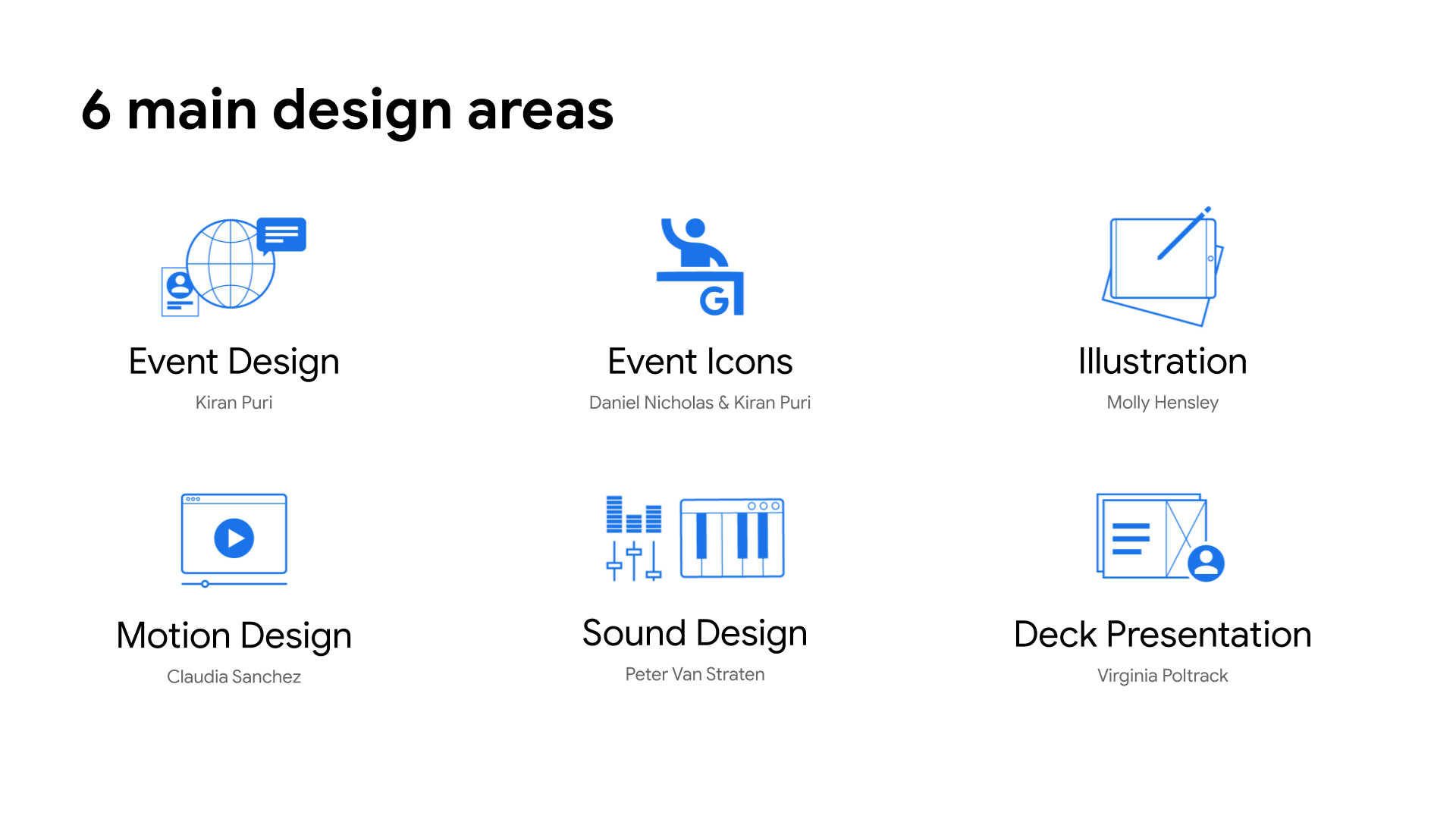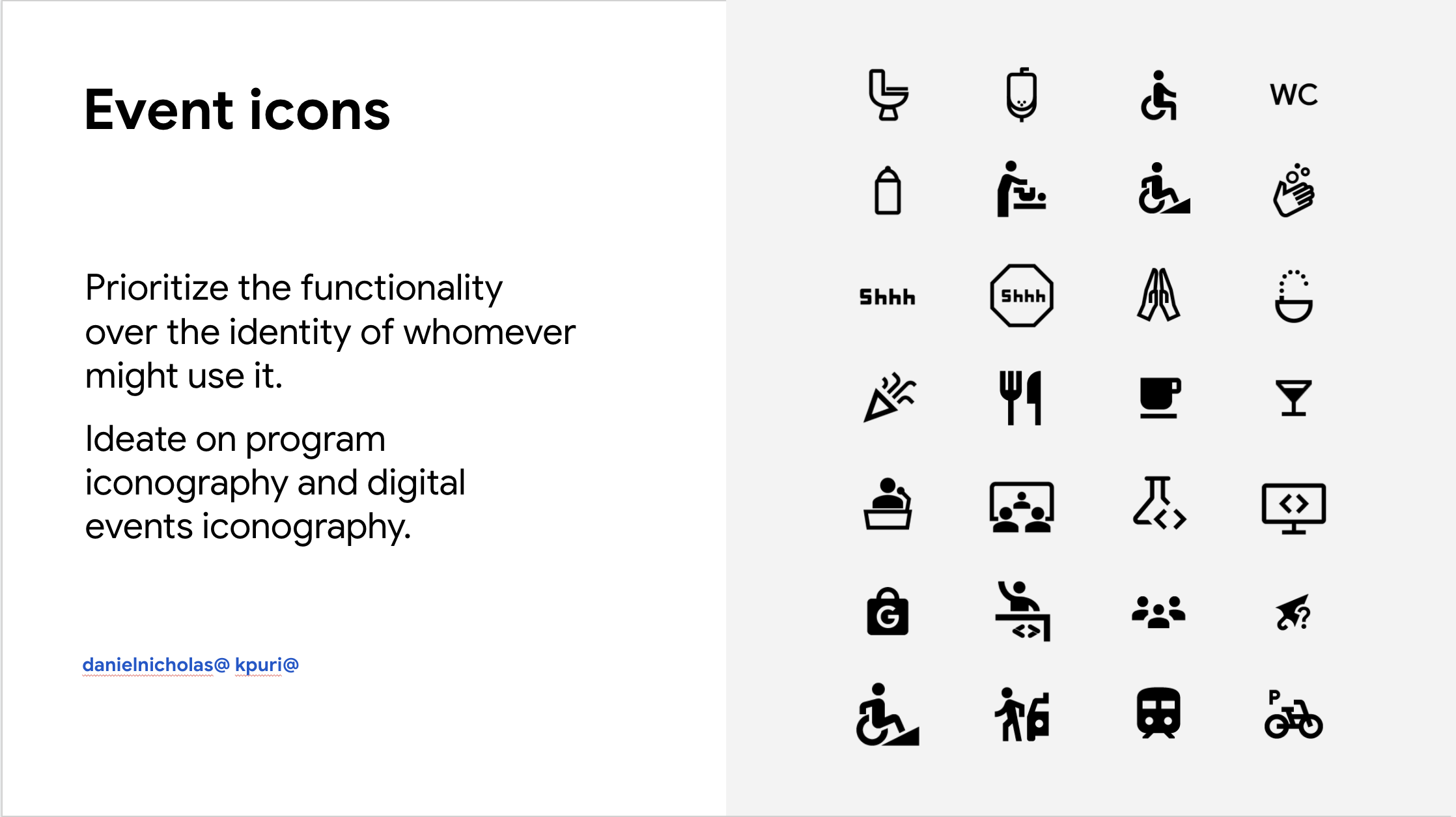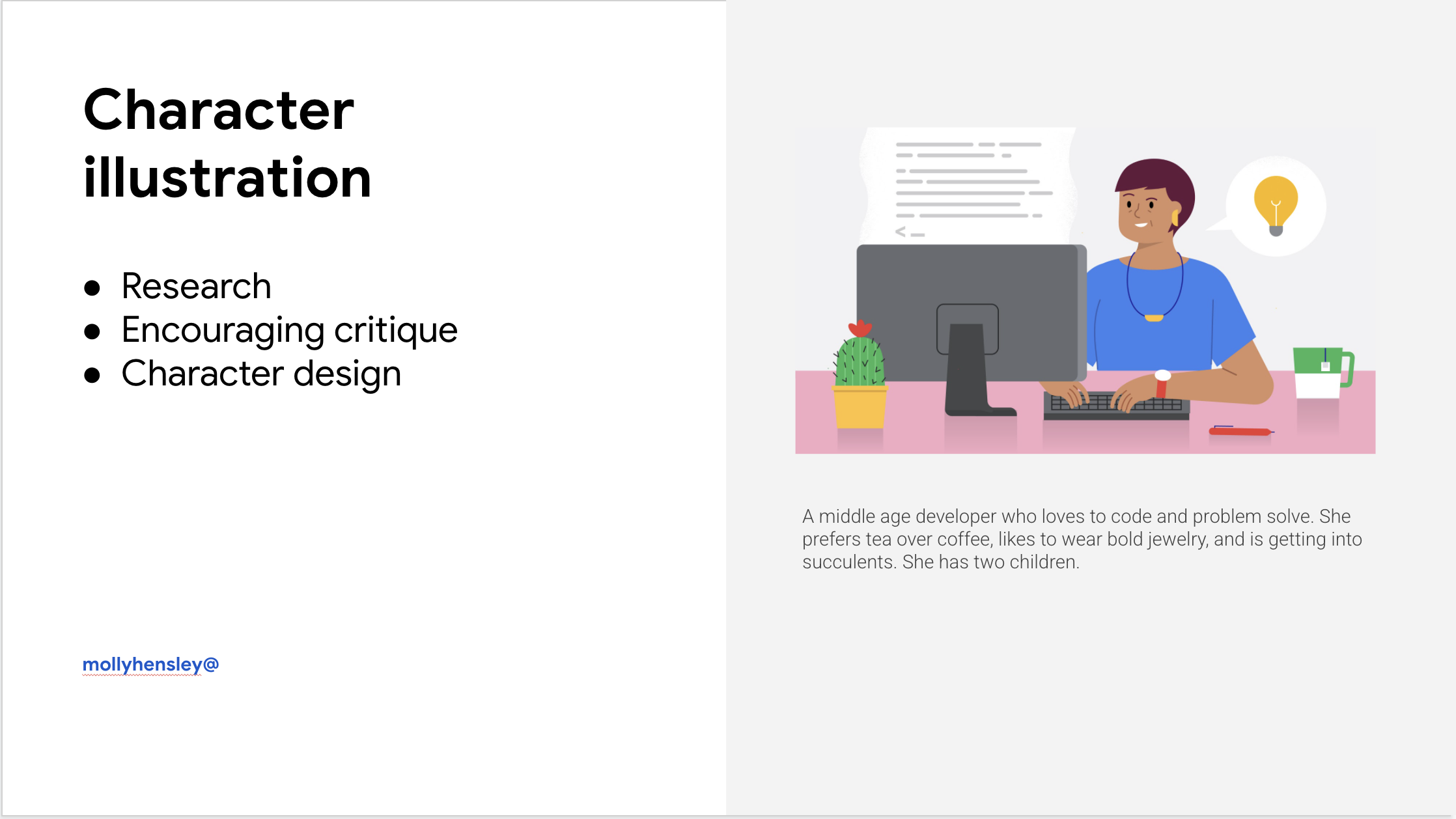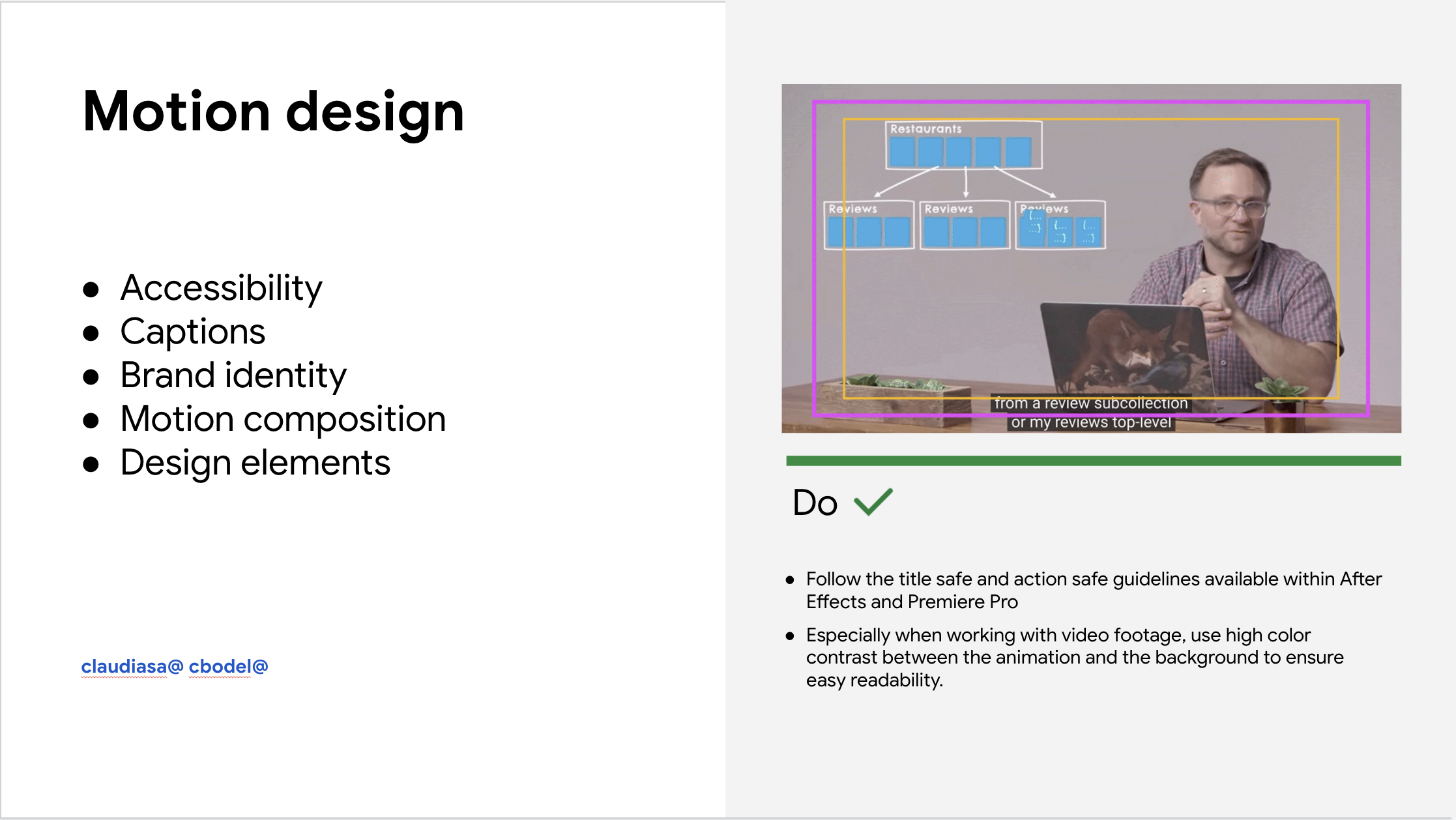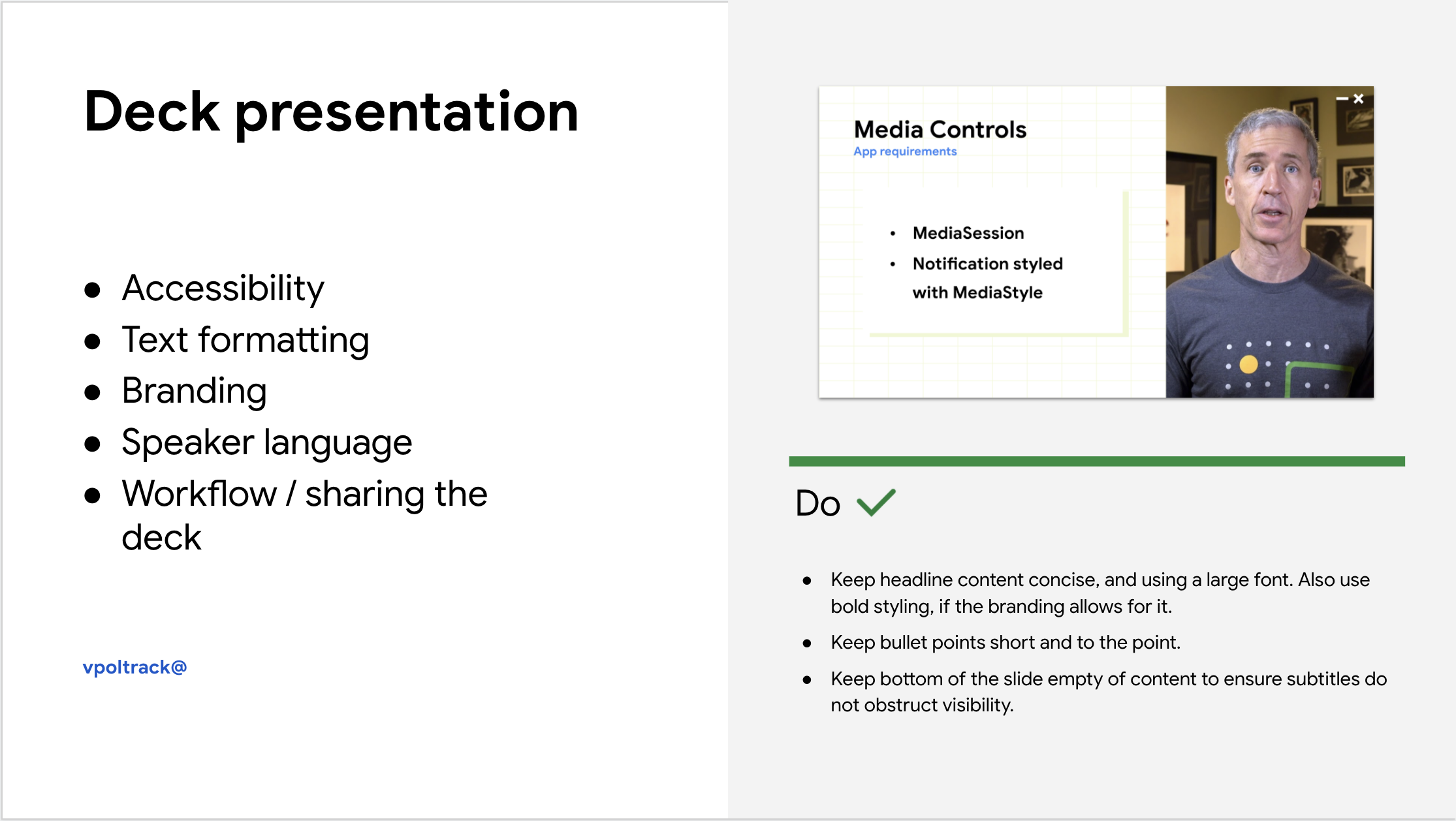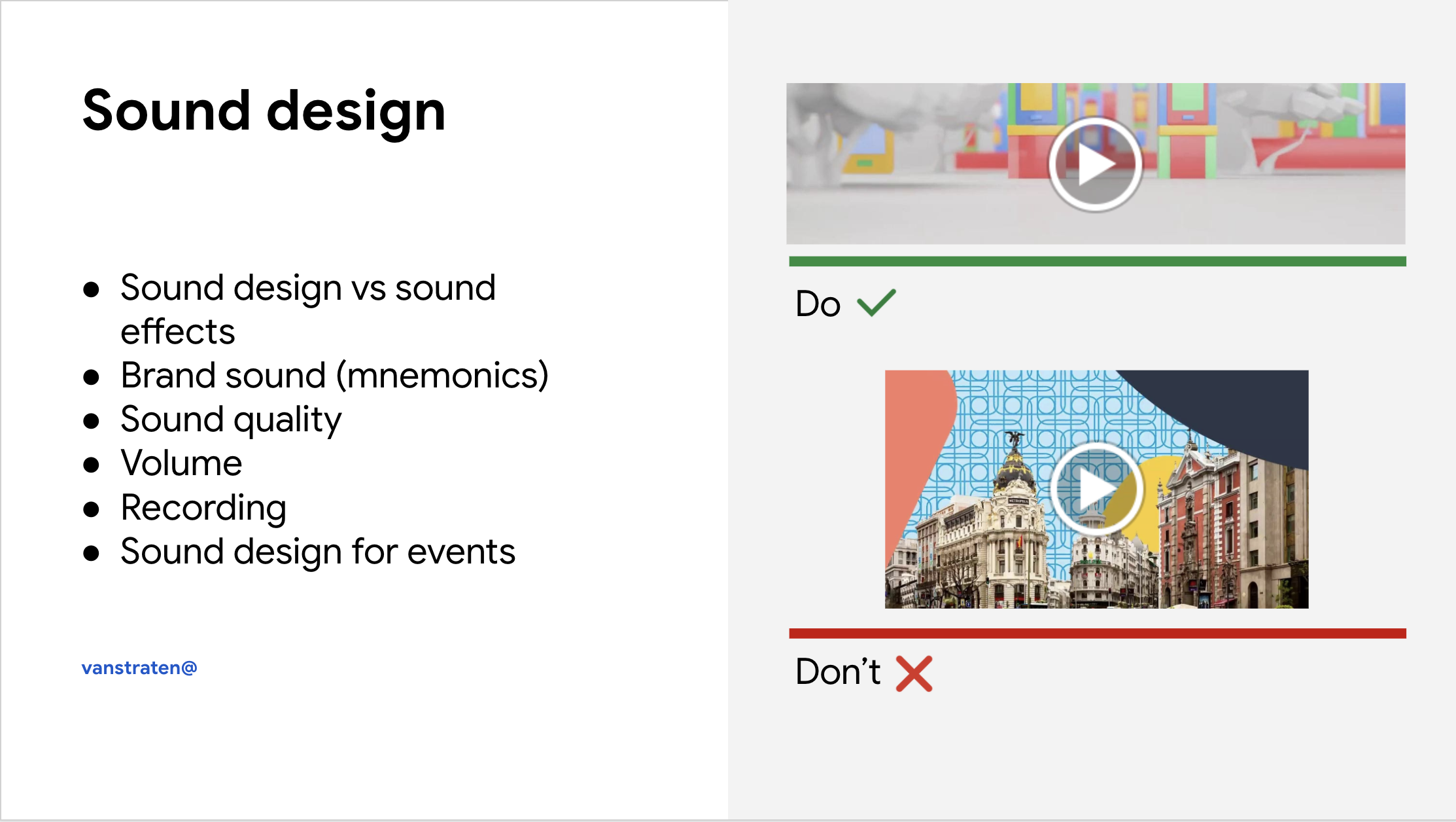GDS Diversity, Equity, and Inclusion Initiative, 2020-2021
Role: project lead, researcher
Team: Virginia Poltrack, Molly Hensley, Jeremy Sie, Peter Van Straten, Christopher Bodel, Grace Petersen, Claudia Sanchez
Scope:
To architect and lead a multi-phase iniative that would bring resources and best practices around DEI to our team’s workflow and deliverables. I began this project in 2018, thanks to the nudge from Vanessa Wang, by researching how our team could design for Google Developer events in a more accessible, inclusive, and equitable way. By 2021, I was leading an 8-person working group to similarly research and document DEI best practices as applied to all facets of our work -- illustration, deck presentation, motion design, sound design, event icons, and event design.
After researching precedents from other tech companies as well as nonprofit and smaller organizations’ DEI programs, I established the following principles provided a framework for how we directed our research and applied it to our own work:
Transparency:
Provide our audience with enough information so they feel included in an interaction, and empowered to navigate that interaction.
Provide our audience with enough information so they feel included in an interaction, and empowered to navigate that interaction.
Affirmation:
When an interaction appeals to a shared characteristic, feeling, or experience of its audience.
When an interaction appeals to a shared characteristic, feeling, or experience of its audience.
Consistency:
Ensure that design styles and messaging are consistent across assets and mediums so as to build trust with our audience, which in turn helps audiences feel confident in engaging with our content.
Ensure that design styles and messaging are consistent across assets and mediums so as to build trust with our audience, which in turn helps audiences feel confident in engaging with our content.
Allowing control:
Design ideally works as a tool to help users navigate an interaction or environment in a manner that suits their abilities and desires. Designs that allow control can provide alternative methods of engagement to this design (ex. subtitles as well as audio), and cultivate a judgement free opportunity to opt-out of an experience.
Design ideally works as a tool to help users navigate an interaction or environment in a manner that suits their abilities and desires. Designs that allow control can provide alternative methods of engagement to this design (ex. subtitles as well as audio), and cultivate a judgement free opportunity to opt-out of an experience.
Google does value DEI on a higher level. However it was an equally challenging and rewarding experience to secure resources and support for this project, and then provide tangible results for these efforts, while also enacting in my leadership approach the principles we were championing, and having the kinds of self-critical conversations required to effect true change.
To that end, huge shout out to the working group who helped move this project to fruition:
Virginia Poltrack, Molly Hensley, Jeremy Sie, Peter Van Straten, Chris Bodel, Grace Petersen, and Claudia Sanchez
Deliverables: Six resource decks that delve into best practices and offer examples of what our team’s designs look like through a DEI lens.
Integration of these findings into our online brand guidelines, gesturing toward how our team aims to value DEI best practices on par with brand standards.
Internal trainings and creative reviews that are slowly shifting the culture of our team to truly prioritize and operate according to DEI best practices.
Presententation at the 2021 Google Developers Relations Conference
